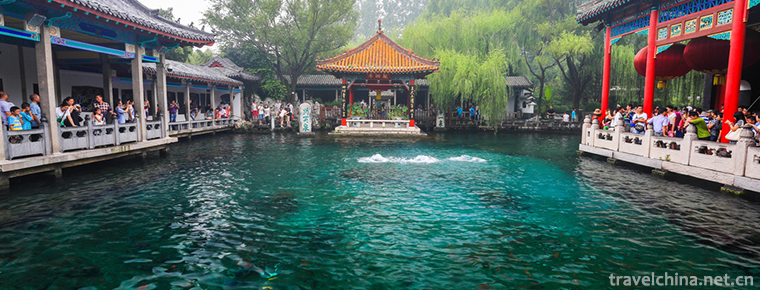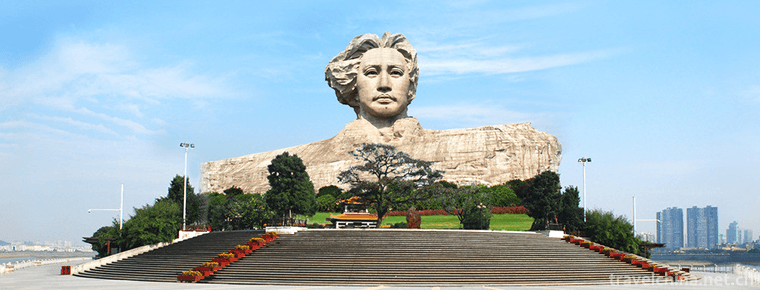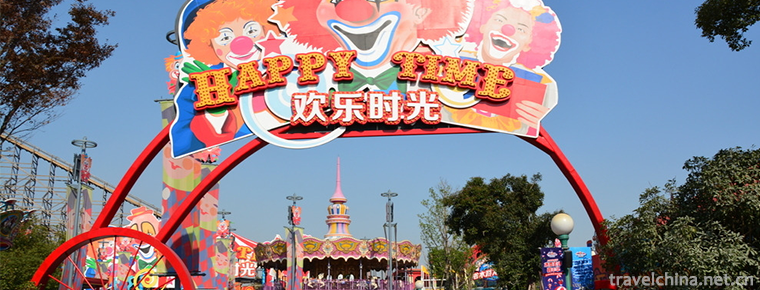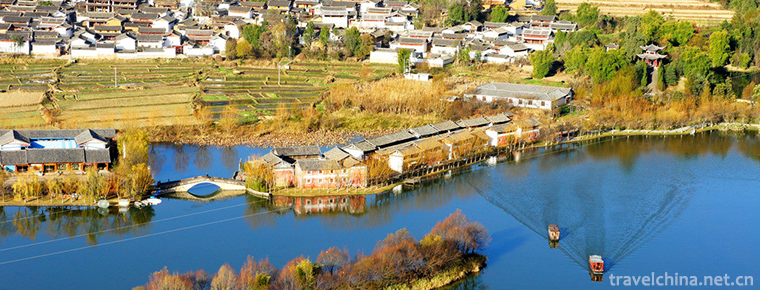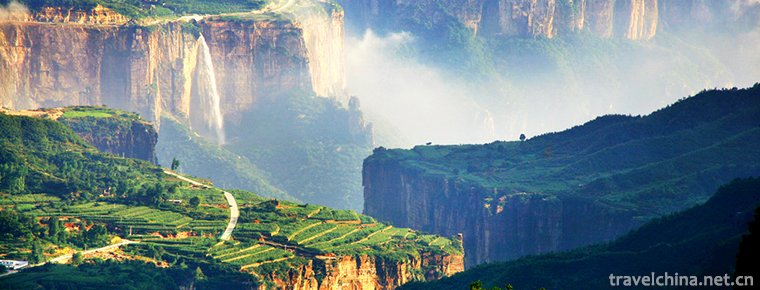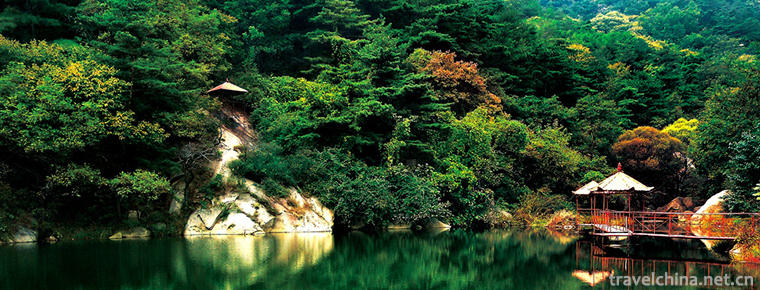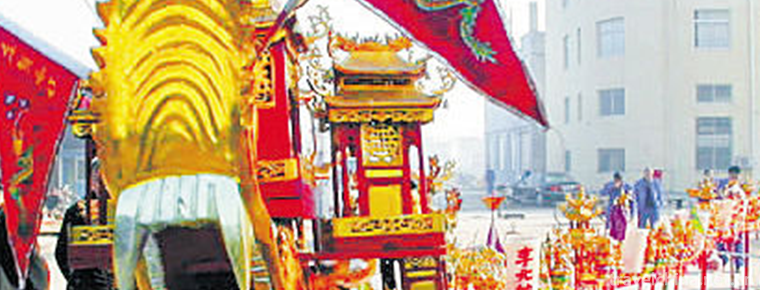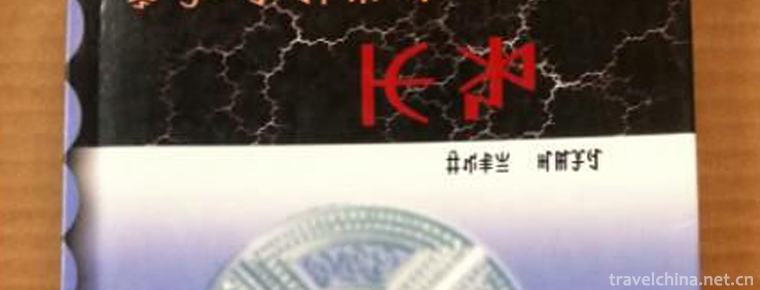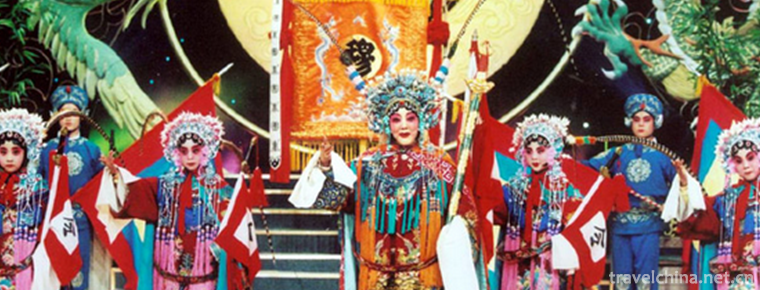Donghekou Earthquake Relics Park
Donghekou Earthquake Site Park is the first earthquake site protection memorial site of Wenchuan Earthquake, located in Qingchuan County, Guangyuan City, Sichuan Province. On November 12, 2008, the opening ceremony of the park and the launching ceremony of the post-earthquake tourism market were held. The earthquake site park is formed by the stress explosion of the earth in the Wenchuan earthquake. It is also a group of earthquake sites with the most abundant geological damage forms, the largest number of seismic barrier lakes and the most serious casualties. The park consists of Guanzhuang Town, Qingchuan County, along the Qingzhu River, through Donghekou, Shibangou, Hongguang Township, to Heijia, Qianjin Township. Along the Hongshi River, through Donghekou, Hongguang Township, Dongjia, Shiba Township, to Magong Township Wo, the park has a "Y" layout, with a concentration of nearly 50 square kilometers, including five townships and one town.
Historical culture
The Wenchuan earthquake occurred at 14:28:04.1 seconds Beijing time on May 12, 2008 (06:28:04.1 seconds World Time on May 12, 2008). The epicenter of the earthquake was located in Wenchuan County, Aba Tibetan and Qiang Autonomous Prefecture, Sichuan Province, and 90 km west-northwest of Chengdu City, capital of Sichuan Province.
East Hekou Fu
He Kai Si
Yuyu Qingchuan County, Youyou East Estuary. Surrounded by mountains, trees are sparse; two rivers converge and the earth is beautiful. Where peach blossoms, chickens and dogs are known to each other, and where peace and happiness are found, the ridges are green. What period of great disaster from heaven, thousands of miles of sorrow from the Longmen.
On May 12, 2008, at 14.28 AD, a magnitude 8 earthquake hit Wenchuan, Sichuan Province. It broke first in Yingxiu and finally in Qingchuan. Heaven and earth are falling apart, rain and wind are raging. Once thousands of miles of homes were destroyed, all living creatures were in danger. At the same time, the tremendous damage of Donghe Estuary is extremely tragic. The sound of the earth is sudden, and the thunder is loud and loud; the mountains are falling and the huge rocks are emptying. The two rivers cut off and became a barrier lake; the surface rose like a tornado. Sorrow, great sadness invisible, great sadness and hope! Peace villages, instantaneous land sink; mourn for my people, die. What nature is violent, disaster is imminent; What world is unkind, destroy my home. In the past, Quzi's heaven asked that the land was lost to the southeast; today, the land was overthrown in Qingchuan. Pain, father and fellow countryman! Sad to my fellow countrymen!
Sigh, catastrophe has great love, danger will be just. Up to relief and rebuild their homes, Qingchuan people united in one heart; blood links, support from the Eight Parties, Shenzhou suffered with this country. Human catastrophe, human progress; create a great cause, a new chapter in history. Susu Site Park, Lili Earthquake Site. Oh, what a terrible Wenchuan earthquake! Please look at the Donghe Estuary! Mountains and rivers are broken and disasters are fierce; there are so many weirs and lakes with sparkling tears. High typhoon mourns the dead; brave and brave, praise the strong life. With deep feeling of flesh and bones, we will never forget that Zhejiang has helped us to overcome the difficulties and create a glorious historical century. Zhuang Zai, Qingchuan Changqing, the earth evergreen, earthquake-proof Donghe Estuary; Wei Zai, earthquake relief, Yongming Qing History, the national spirit contains a magnificent light! uuuuuuuuuuuu
Man and nature, eternal topic, the existence of the main road, harmony is the highest; fear of nature, love of nature, three in one, for a long time! uuuuuuuuuuu
Note: Three talents: referring to heaven, earth and people in Chinese culture.
On May 11, 2009, in the East Hekou Earthquake Relics Park in Qingchuan, Sichuan Province, a stone tablet stands in the center of the earthquake plaza, engraved with "Donghekou Fu" written by He Kaisi, Chairman of Sichuan Literary and Art Critics Association.
It is reported that when the earthquake happened on May 12, 2008 in the eastern estuary of Qingchuan, landslides and ground cracks occurred, and thousands of miles of homes were destroyed once. After the completion of Donghekou Site Park, the three themes of recalling the victims, earthquake research and tourism development were integrated. When He Kaisi visited Donghekou in September 2008, the earthquake scene here inspired him to write Fu. After deliberation, he wrote Donghekou Fu. He Kaisi said: "Any disaster is compensated for by human progress. This Fu is intended to embody the spirit of local people to unite and rebuild their homes, and to express their gratitude for the support of one side in difficulties. I hope to record this disaster and rebirth in the form of Fu. He Kaisi put forward a point of view in another Fu "The Tablet of Castle Peak and Jinyuan", which was written for the largest Banfang District of Qingcheng Mountain and Qingshan Town: "Earthquake resistance and reconstruction should be combined, and disaster relief should be co-produced. Develop and heal wounds, develop and rejuvenate homes."
geographical environment
The collapse sites of Donghekou Village, Qinglong Village, Shiba Township, Woqian Village, Magong Township, and Sanfeng Village, Suhe Township, which are formed by four major earth stress outbursts, show the collapse, ground fissures, uplifts, faults, folds and other geological failure patterns caused by earthquakes. The landslides and debris flows caused by mountain movement also formed 36 barrier lakes with different shapes, such as Shibangou, Donghekou and Hongshihe.
The entrance of the park is located in Xinhua Village, Guanzhuang Town. Before the earthquake, two-storey buildings were built on the riverside. Through the buildings, you can walk on a cable bridge to Xinhua Village on the other side of the river. Locals call the bridge Xinhua Bridge, which is the only way for villagers to enter and leave the village. Today, there is only one floor left on the other side of the river, and there are crisscross cracks in the walls. On the roof of the building, there were only empty wooden frames left in the old wooden pavilion. On the other side of the river, the mountains seem to have been cut by knives, and the white marks are clearly visible.
On the square, the three huge stones coming in front of us are like a big word "Sichuan". The three boulders are arranged at a distance of 5.12 meters and 2.28 meters, on May 12, 2008 and at 1428 hours. Beneath the three boulders is a topographic map of Qingchuan. Near the square, a panoramic view of the Donghe Estuary before and after the earthquake is erected. "More than 780 people were buried in four groups of 184 houses and villagers, passers-by, teachers and students of Donghekou primary school after the May 12 earthquake, when Donghekou collapsed." On the side of the square, silent data still describe the damage caused by the earthquake.
A 5.1-meter-long, 4.8-meter-wide, 3.2-meter-high, 150-ton boulder sits in the park. This is a strange stone, different from other stones in shape and material. In order to prevent weathering, the management specially coated the stone surface with a layer of tung oil protection. Where does this stone come from? Was it caused by the earth stress explosion in the Donghekou Estuary? Or does the crust crush out of the ground? "It was supposed to have flown across from Wang Jiashan when it collapsed." A construction worker said, "It's more than two kilometers from there to here. Such a big thing has flown So far. It can be seen that the earthquake was terrible at that time."
Main attractions
Donghekou Earthquake Site Park is the first memorial park of Wenchuan Earthquake Site. It is an earthquake site group formed by the most abundant geological damage forms and the most concentrated number of earthquake barrier lakes in Wenchuan Earthquake.
Qingchuan Donghekou Earthquake Relics Park has been built into a national 4A-level tourist attraction, a national Red Tourism classic scenic spot, a national earthquake popular science education base, a provincial patriotic education base, and a Sichuan-level geological park. "To Donghekou, to see landslides and fissures, witness tragic and stirring up life." Zhang Xiaoshen, a local villager, said with emotion, "After the earthquake relief and post-disaster reconstruction, our home has become more beautiful and our life has become better, which is also the best place for popular science education in earthquake prevention and disaster reduction."
Earthquake Site Square
These three boulders are also flying here in the earthquake, forming a huge "Sichuan" word, representing the Sichuan earthquake, but also represents the seismic wave from the beginning of the break point Wenchuan through Beichuan to the end of the break point Qingchuan these three extreme disaster areas. The time is fixed forever at 14:28 on May 12, 2008, when the disaster occurred. Three stones stand on the map of Qingchuan, implying that it is the mountains and rivers of Qingchuan that have been shaken by the earthquake and the spirit of Qingchuan that can not be shaken!
Weir Lake at Donghekou
It is formed by the blockage of rivers by the accumulation of huge mountain outbursts. The pole in the middle of the lake used to be a good field. Two kilometers further along the Donghekou barrier lake is Shibangou barrier lake, which is also the second largest barrier lake in Wenchuan earthquake, after Tangjiashan barrier lake.
table of sacrifice
The mourning platform for the victims of the Wenchuan earthquake, the black marble altar, is engraved with the names of Donghekou villagers who were killed in the Wenchuan earthquake and the names of their compatriots who were killed in Qingchuan. Worship is a kind of belief, worship those who died in the Wenchuan earthquake, so that the deceased can rest, so that the living more strong. Let us always remember them and remember them. At the same time, inspire the spirit, turn grief into strength, rebuild a beautiful new home and comfort the spirit of heaven
Wang Yangping Scenic Terrace
Here we can get a more complete view of the Donghekou Earthquake Site and a closer look at the site of the Earth Stress Burst Point in the Donghekou Earthquake Site.
Donghekou Bridge Site
It was an important bridge on the Jintang Line that had experienced the extraordinary flood on August 28, 2006. It could withstand the impact of the flood, but failed to withstand the relentlessness of the earthquake. The Donghekou Bridge was buried nearly 80 meters deep. It is said that when the earthquake occurred, there was a bus on the bridge.
Redstone River
A brand new Red Stone River. The huge accumulation formed by the earthquake blocked the old Hongshi River. In order to eliminate the danger as soon as possible, the Tigers Division of Jinan Military Region and the Armed Police Hydropower Troop fought hard and excavated the river channel.
Love square
This stone in the square is called "Love Stone". On May 18, 2008, General Secretary Hu Jintao, at the rescue site in Yinghua Town, Shifang City, where the disaster was most serious, shouted firmly with a loud voice, "No difficulty can daunt the heroic Chinese people!" Encouraged by this spirit, we have overcome difficulties one after another and set off climaxes of post-disaster reconstruction one after another.
Seismic stone
The stone is 5.1 metres long, 4.8 metres wide, 3.2 metres high and weighs more than 150 tons. Before the earthquake, it was a good field without this stone. After the earthquake, the rock is situated here, which is quite different from the rock material from the nearby mountain collapse. Did it come from the earth stress explosion in the Donghekou Estuary, or did the crust squeeze out from the ground? It needs to be explored.
Seismic Knowledge Gallery
Earthquakes are terrible. They are irresistible, but they can be prevented. Earthquakes can not be predicted accurately, but earthquakes can be recognized scientifically. Earthquakes have given us a relentless blow and changed the trajectory of many people's lives. Human life is fragile and insignificant in the face of earthquakes, but through understanding earthquakes and knowledge of earthquakes, we can win the maximum living space. Watch the knowledge Gallery of earthquake cartoons. Let's go into earthquakes together and recognize earthquakes.
Photo exhibition
The photo exhibition focuses on disaster, care, rescue, reconstruction and gratitude. Under the general guidance of the Party Central Committee and the State Council for post-disaster reconstruction, with the strong support of Qingchuan, a counterpart of Zhejiang Province, and under the strong leadership of Party committees at all levels, we carry forward the spirit of Qingchuan, which is "all-hearted, tenacious, self-reliant and indefatigable". We have fought hard for a thousand days to build a better new Qingchuan.
Qingchuan in heaven
People were surprised to find the word "Qingchuan" written by Shenlai in the earthquake on a hillside in Donghekou Earthquake Relics Park.
Tourist guide
Bus Passenger Line
(1) Guangyuan-Donghekou
Guangyuan Nanhe Bus Station: Guangyuan-Qingchuan, Guangyuan-Qingxi Bus
When you buy tickets, you buy Liangshui Town, get off at Liangshui Bridge, and then catch a van or motorcycle to Donghekou. Note: Guangyuan-Qingxi Bus can reach the Site Park directly.
(2) Mianyang - east Estuary
Mianyang Ping Zheng Bridge car station: Mianyang - Qingchuan, Mianyang - Qingxi bus
Buy the ticket, buy cold water town, get off at the cold water bridge, and then get to the east mouth of the van or motorbike. Note: Mianyang Qingxi bus can reach the site park directly.
The Chengdu - east Estuary
Chengdu Zhaojue bus station: Chengdu - Qingchuan, Chengdu - Qing Xi bus
When buying tickets to buy Water Town, get off at the bridge in cold water, and then rushed to the east mouth of the van or motorcycle.
Note: Chengdu Qingxi bus can directly reach the site of the park
Passenger train line
Guangyuan - East River Estuary
In the GuangYuan Railway Station to catch the train K9457 (Guangyuan - Chengdu), at 14:03 at the start of the GuangYuan Railway Station, Zhu Yuan Ba Railway Station and get off at 15:34 and then arrived at the Zhu Yuan Ba Railway Station; outside Zhu Yuan Ba Railway Station van or bus to get off at the town of cold water, cold water in the East Bridge, then rushed to the mouth of the van or motorcycle.
The Mianyang - east Estuary
In the MianYang Railway Station to catch the train K9458 (Chengdu - Guangyuan), the MianYang Railway Station started at 9:53 in the morning, in the Zhu Yuan Ba Railway Station and get off at 12:16 and then arrived at the Zhu Yuan Ba Railway Station; outside Zhu Yuan Ba Railway Station van or bus to get off at the town of cold water, cold water in the East Bridge, then rushed to the mouth of the van or motorcycle.
The Chengdu - east Estuary
Catch the K9458 train north train station in Chengdu (Chengdu - Guangyuan), Chengdu North train station at 7:59 in the morning, in the Zhu Yuan Ba Railway Station and get off at 12:16 and then arrived at the Zhu Yuan Ba Railway Station; outside Zhu Yuan Ba Railway Station van or bus to get off at the town of cold water, cold water in the East Bridge, then rushed to the mouth of the van or motorcycle.
Self driving line
Guangyuan - East River Estuary
In Guangyuan cotton wide high-speed, high-speed export in gold hill, Qingchuan two big junction turn right on road, walk about 30 kilometers, visible on the left side of the road traffic police brigade cold water signs, left cold water bridge, about 15 km before the line is Zhuang Town, then walk about 5 kilometers to reach the donghekou earthquake the ruins of the park gate.
The Mianyang - east Estuary
In Mianyang cotton wide high-speed, high-speed export in gold hill, Qingchuan two big junction turn right on road, walk about 30 kilometers, visible on the left side of the road traffic police brigade cold water signs, left cold water bridge, about 15 km before the line is Zhuang Town, then walk about 5 kilometers to reach the donghekou earthquake the ruins of the park gate.
The Chengdu - east Estuary
In Chengdu chengmian wide high-speed, high-speed export in gold hill, Qingchuan two big junction turn right on road, walk about 30 kilometers, visible on the left side of the road traffic police brigade cold water signs, left cold water bridge, about 15 km before the line is Zhuang Town, about 5 kilometers to go on to East estuary the earthquake ruins park gate. Car one-way tolls: 83 yuan.







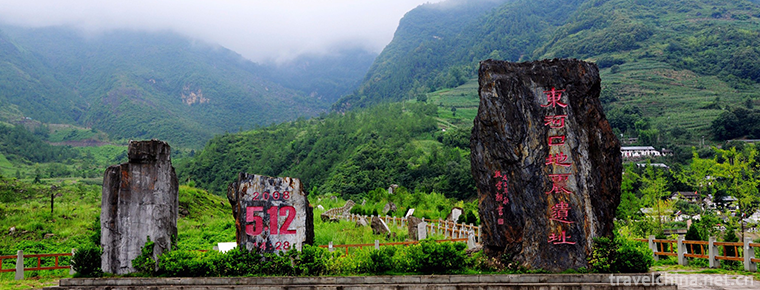
-
Jinan World First Spring Scenic Area
Jinan World No. 1 Spring Scenic Area, located in the center of Jinan City, Shandong Province, is a national AAAAA-level tourist attraction, national key park, advanced unit of national spiritual civil.
Views: 186 Time 2018-12-08 -
Yuelu Mountain and Orange Prefecture Tourist Area
Orange Island Scenic Area is located in the heart of the Xiangjiang River opposite Changsha City, Hunan Province. It is the largest famous island in the Xiangjiang River with an area of 91.4 hectares.
Views: 183 Time 2018-12-12 -
Shanghai Park Hyatt Hotel
Shanghai Park Hyatt Hotel is an exquisite modern Chinese-style residential hotel, located on the 79th to 93rd floors of Shanghai Global Financial Center, known as the Vertical Comprehensive Urban Area.
Views: 195 Time 2018-12-16 -
Shanghai Happy Valley
Shanghai Happy Valley is located in the Songjiang Sheshan National Tourism Resort in the southwest of Shanghai. It is 40 kilometers from the central area of Shanghai.
Views: 139 Time 2018-12-19 -
Guanyin Gorge Scenic Area
Guanyinxia scenic spot is the entrance of Yulong Pass, one of the six major parks of Lijiang Bazi. It is located at the "Yulong Pass" of the three major parks of Lijiang Bazi and is known as.
Views: 268 Time 2019-01-13 -
Linzhou Taihang Grand Canyon Scenic Area
Taihang Grand Canyon Scenic Area is located in Linzhou City, northwest of Henan Province, on the eastern foot of the southern Taihang Mountains. It is 100 miles long in the north and south.
Views: 266 Time 2019-01-30 -
Lushan National Forest Park
Located in the center of Shandong Province, Lushan National Forest Park is an important scenic spot of Boshan Scenic Tourist Area, with its main peak at 1108.3 meters above sea level, the highest peak.
Views: 146 Time 2019-02-06 -
Luliang Colorful Sand Forest
Luliang color sand forest is a national AAAA tourist area, 18 kilometers away from Luliang County. 108 named scenic spots are located in the "Y" shaped canyon, with a total area of 180 hecta.
Views: 132 Time 2019-02-06 -
Dragon file long dang
"Dragon File", also known as "Bench Dragon", is a craft art with strong local folk traditional characteristics in Yueqing, Zhejiang Province, China. Dragon stalls are developed fro.
Views: 135 Time 2019-05-14 -
Mamuteyi Ma mu te yi
Mamuteyi, translated into Chinese as Education Classic, is the product of the slavery society of the Yi people in Liangshan. In the Yi language, "Ma" means education, instruction and persuas.
Views: 121 Time 2019-05-16 -
Henan Opera
Henan Opera, originating in the Central Plains (Henan), is one of the five major Chinese operas and the largest local opera in China. Contemporary Henan Opera has followed Henan Satellite TV, Henan He.
Views: 222 Time 2019-07-16 -
Appreciation of short sleeve cheongsam
In the late summer and early autumn, the weather is chilly in the morning and evening. As long as you put on some thin shawls, you can wrap some cloth shawls and tighten them on your chest..
Views: 309 Time 2020-12-11
